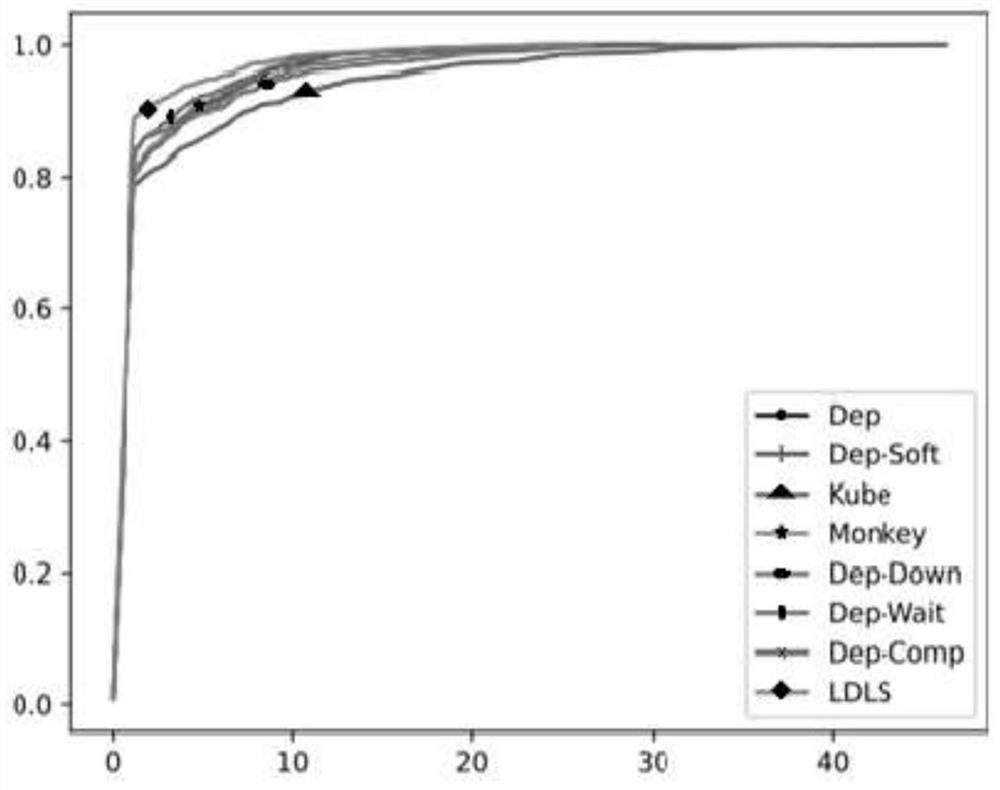Online learning type scheduling method based on container layer dependency relationship in edge computing
An edge computing and dependency technology, applied in the deep reinforcement learning field of machine learning, can solve problems such as layer-based scheduling problems that cannot be directly applied, repeated downloads, and hidden dependencies that cannot be extracted well.
- Summary
- Abstract
- Description
- Claims
- Application Information
AI Technical Summary
Problems solved by technology
Method used
Image
Examples
specific Embodiment
[0137] We use Python to program and simulate the edge nodes, containers, mirrors, layers, user tasks, schedulers and other classes in the edge computing system. Based on these classes, a simulated edge computing environment is implemented. On this basis, the functions required by learning algorithms such as state acquisition, action selection, environment update, policy network training, policy gradient calculation, and value function update are realized. The policy network mainly includes a vector embedding layer, a factorization layer, and a linear layer. The experimental data comes from the data crawled from the real container warehouse. After data cleaning and preprocessing, a total of 70 image files and 337 layer files were obtained.
[0138] In addition, the main parameters of some experiments are set as follows. The storage space of each node ranges from 5GB to 15GB and is set randomly. The bandwidth of each node is randomly set from 70Mbps to 90Mbps. The CPU frequen...
PUM
 Login to View More
Login to View More Abstract
Description
Claims
Application Information
 Login to View More
Login to View More - R&D
- Intellectual Property
- Life Sciences
- Materials
- Tech Scout
- Unparalleled Data Quality
- Higher Quality Content
- 60% Fewer Hallucinations
Browse by: Latest US Patents, China's latest patents, Technical Efficacy Thesaurus, Application Domain, Technology Topic, Popular Technical Reports.
© 2025 PatSnap. All rights reserved.Legal|Privacy policy|Modern Slavery Act Transparency Statement|Sitemap|About US| Contact US: help@patsnap.com



